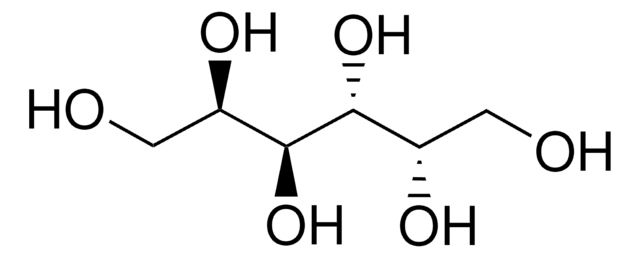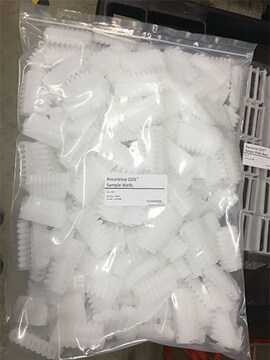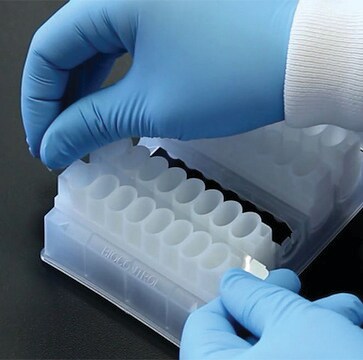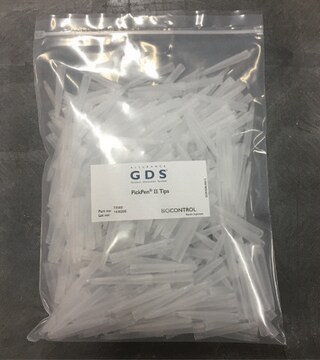73044
Dulcitol Disks
suitable for microbiology, Sterile filter paper discs impregnated with dulcitol
Sinónimos:
Carbohydrate discs
About This Item
Productos recomendados
Nivel de calidad
esterilidad
sterile
Línea del producto
BioChemika
formulario
disc
caducidad
limited shelf life, expiry date on the label
envase
pkg of 10 × 25 discs
técnicas
microbe id | utilization test: suitable
aplicaciones
clinical testing
environmental
food and beverages
pharmaceutical
microbiology
temp. de almacenamiento
2-8°C
idoneidad
Salmonella spp.
bacteria
Descripción general
Aplicación
Código de clase de almacenamiento
11 - Combustible Solids
Clase de riesgo para el agua (WGK)
WGK 3
Punto de inflamabilidad (°F)
Not applicable
Punto de inflamabilidad (°C)
Not applicable
Equipo de protección personal
Eyeshields, Gloves, type N95 (US)
Elija entre una de las versiones más recientes:
¿Ya tiene este producto?
Encuentre la documentación para los productos que ha comprado recientemente en la Biblioteca de documentos.
Artículos
There are many other methods of detection to indicate the presence of E. coli. Review common tests and biochemical reactions for this contaminant.
Salmonella contamination is the second leading cause of food-borne illness worldwide. Controlling outbreaks of Salmonella is an important task for food regulators, restaurants and the food industry in general. The Salmonella family includes over 2,300 serotypes of bacteria, but two types, Salmonella enteritidis and Salmonella typhimurium, are responsible for about half of all human infections. Most outbreaks of Salmonella are traced back to dairy, poultry and meat products, but Salmonella can grow on nearly any food. Chicken, eggs and their derivative products are particularly high risk.
Nuestro equipo de científicos tiene experiencia en todas las áreas de investigación: Ciencias de la vida, Ciencia de los materiales, Síntesis química, Cromatografía, Analítica y muchas otras.
Póngase en contacto con el Servicio técnico





